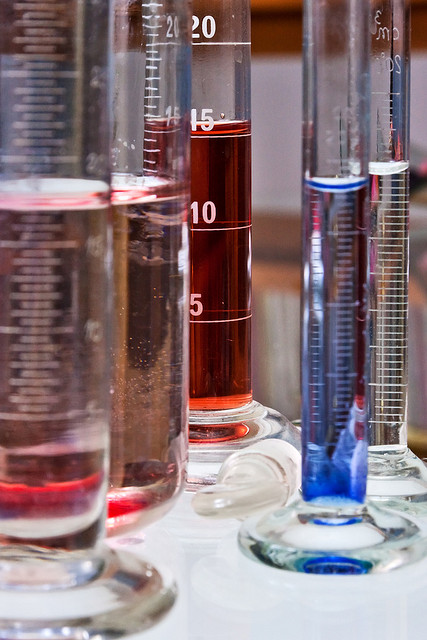Forensics 101: Forensic Toxicology
/ In blog posts over the past four and a half years (!), we’ve covered many aspect of the forensic study of death encompassing forensic anthropology, forensic pathology, forensic odontology, and including many of the techniques used in crime scene analysis such as fingerprinting, shoe and tire casting, and arson reconstruction. But one topic we’ve never covered that can be a crucial part of any death investigation is forensic toxicology―the analysis of chemicals and biochemicals that may be responsible for a victim’s death.
In blog posts over the past four and a half years (!), we’ve covered many aspect of the forensic study of death encompassing forensic anthropology, forensic pathology, forensic odontology, and including many of the techniques used in crime scene analysis such as fingerprinting, shoe and tire casting, and arson reconstruction. But one topic we’ve never covered that can be a crucial part of any death investigation is forensic toxicology―the analysis of chemicals and biochemicals that may be responsible for a victim’s death.
The body of knowledge required for the complexities of forensic toxicology is extremely broad. Not only does the toxicologist need to be familiar with thousands of toxic chemicals ―including narcotics, poisons, prescribed medications, alcohol, and environmental chemicals―but he or she also needs to understand how each of those chemicals interacts with the human body from ingestion through elimination, including the speed of metabolic processing. Not only does the chemical itself need to be identified, but the concentration must be determined as well, since many legal pharmaceuticals can become deadly poisons when taken in excess. The field of forensic toxicology takes into account aspects and methodologies from a number of sciences―analytical chemistry, biochemistry, epidemiology, pharmacodynamics, pathology, and physiology. It’s a very complicated science.
A toxicologist also needs to consider evidence found at the crime scene including prescription bottles, visible trace evidence, and drug paraphernalia. A half empty prescription bottle near the bed might not mean the deceased took all the missing pills at once, but a syringe of heroin still in a drug addict’s arm might indicate that looking at narcotics would be a good place to start the investigation into cause of death.
Often, however, the original chemical is not what the toxicologist looks for; instead, chemical breakdown products indicate a substance's original presence. And while we are mostly considering toxicology as contributing to cause of death, there are multiple uses of toxicology in live subjects as well, some of which we will consider below.
Multiple human samples can be taken for toxicology testing:
- Urine: While this is one of the most useful, non-invasive samples for drug testing, urine can’t indicate real-time impairment, only prior exposure to a drug. However, it can indicate the presence of chemicals up to several weeks after ingestion. Due to the private nature of sampling, regulations concerning collection must be put in place to avoid sample switching. Urine testing can be used with the living for real-time drug testing (ie. steroid use in sports) or post-mortem to help determine cause of death.
- Blood: As opposed to urine, blood can be used to substantiate the real time effect of a chemical. For example a blood alcohol level of greater than 0.08% indicates a dangerous and criminal level of impairment behind the wheel of a car. Blood testing is often the main way of determining toxic levels of drugs or chemicals in the deceased (ie. carboxyhemoglobin to prove carbon monoxide poisoning during a fire).
- Hair: Hair is used to prove long-time drug usage or to indicate exceedingly high dosages transferred from the blood steam. As human hair grows approximately 1 to 1.5 cm per month, the location of a drug in the hair shaft can indicate ingestion over long periods of time. Unfortunately, the characteristics of the hair itself can affect the results with coarse dark hair retaining more of any compound than fair, light hair, which can lead to suggestions of racial profiling.
- Gastric contents: Depending on the time of death following ingestion of poison or prescription medication, the stomach contents can contain high levels of drugs or potentially undigested pills.
- Vitreous humor: The vitreous humor is the fluid within the sphere of the eye. As it is isolated from the rest of the body, there is no chemical diffusion, and as the eye tends to putrefy more slowly than the majority of the body’s soft tissues, this allows needle sampling and chemical analysis in more decomposed victims.
- Maggot sampling: In victims that are found following a prolonged period after death and are in a state of advanced decomposition, sometimes it is not possible to test the body’s tissues. If flies have been allowed to land on the body and lay eggs, and a sufficient time has passed to allow maggot hatching and feeding, the maggots themselves may contain the toxic chemical that killed the victim. Analysis of the maggots themselves may reveal the chemical cause of death of the victim.
Since multiple sample types and many different compounds must be considered during testing, there are many different complicated analytical chemistry methodologies that can be used for the analysis including chromatography, spectroscopy, x-ray diffraction, immunoassays, and mass spectrometry. Despite the complexities, forensic toxicology can often be the field of science to determine cause of death when many other forensic specialties come up empty handed, leading investigators to a better understanding of the victim’s life and death.
Photo credit: Horia Varlan



 54.7%
54.7%